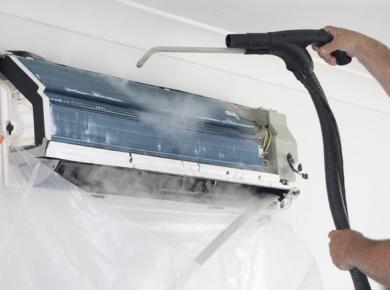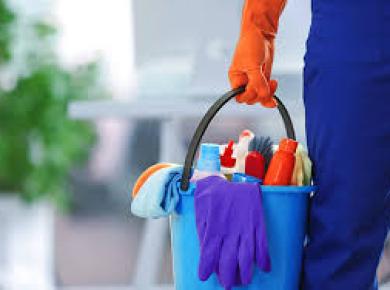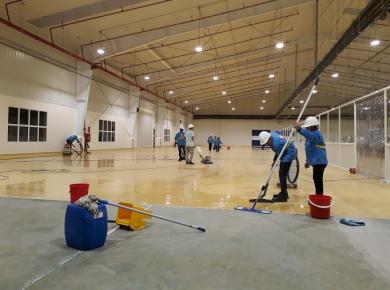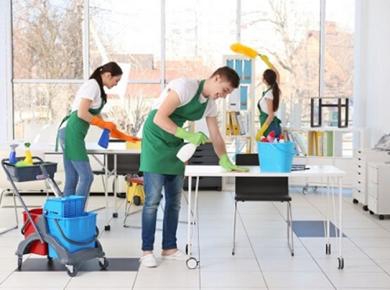A clean office is not only the face of your business but also directly impacts employee productivity, mental well-being, and client impressions. However, not all businesses have a clear, well-structured cleaning schedule. Disorganized cleaning routines can quickly degrade the working environment, negatively affecting health and performance.
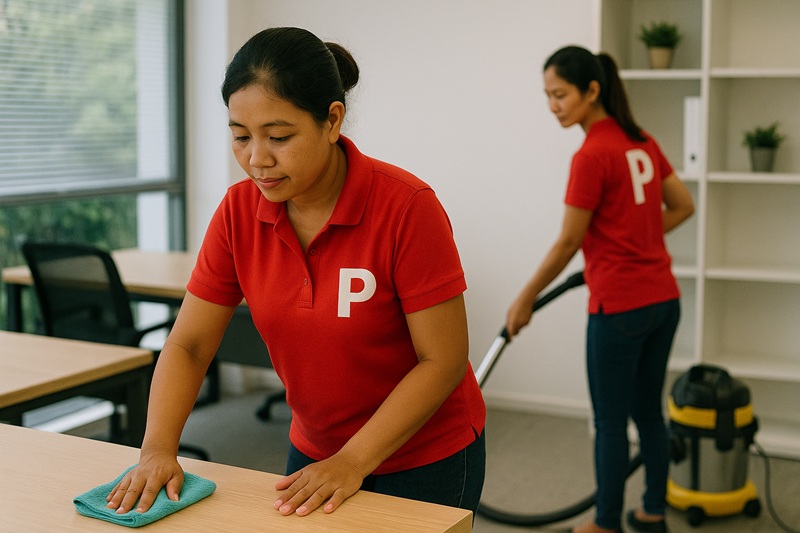
In this article, you will learn how to create an effective and practical weekly cleaning schedule for your office space. We also provide a detailed sample timetable that can be implemented right away. This is a cost-effective solution that ensures high hygiene standards and helps maintain a professional, pleasant workspace.
Why Do You Need a Weekly Office Cleaning Schedule?
Common areas in the office can accumulate dust, bacteria, and unpleasant odors if not regularly maintained. Having a weekly cleaning plan ensures that key areas are consistently cleaned, which helps:
- Protect employee health and minimize the spread of illness.
- Make a positive impression on clients and partners who visit the office.
- Extend the lifespan of office furniture, flooring, and equipment.
- Boost productivity by creating a tidy, inspiring work environment.
Principles for Building an Office Cleaning Schedule
Before creating a detailed schedule, it's essential to understand a few key principles to ensure it works efficiently:
1. Divide Cleaning by Area
Office spaces typically include various zones: workstations, shared areas, meeting rooms, restrooms, kitchenettes, etc. Each has its own cleaning requirements. Segmenting by area allows for better planning and execution.
2. Assign Appropriate Frequency
Not every area needs daily cleaning. For instance, restrooms require daily attention, but meeting rooms might only need cleaning 2–3 times a week. Adjust the cleaning frequency based on actual usage patterns.
3. Define Clear Responsibilities
If you have in-house janitorial staff, assign tasks by day and area. If you outsource, clearly specify areas, working hours, and cleaning standards in the contract.
4. Implement Periodic Reviews
Once the schedule is in place, appoint someone to regularly review and monitor cleaning quality—either weekly or monthly.
Sample Weekly Office Cleaning Schedule
Here’s a sample schedule you can apply or customize based on your office size and structure:
| Area | Cleaning Frequency | Tasks |
|---|---|---|
| Workstations | Daily (end of workday) | Dusting, organizing desks, emptying personal bins |
| Meeting Rooms | Monday – Wednesday – Friday | Wipe tables/chairs, vacuum carpet, remove used cups |
| Common Areas (lobby, hallways) | Daily | Sweep, mop, wipe handrails and door handles |
| Restrooms | Twice daily (morning and afternoon) | Clean toilets, mirrors, sinks, refill tissues and soap |
| Pantry/Kitchenette | Daily | Clean surfaces, empty trash, sanitize fridge & microwave weekly |
| Office Equipment | Once a week | Clean printers, fingerprint scanners, fans, AC units |
Note: This schedule should be adapted based on your team size and office layout.
Key Considerations for Implementation
No matter how detailed your plan is, execution matters most. Keep these best practices in mind when applying your cleaning schedule:
1. Use the Right Tools and Cleaning Products
Each area needs different cleaning agents. Work desks require gentle products that won't harm electronics, while restrooms need disinfectants. Choosing the right cleaning materials ensures cleanliness and safety.
2. Maintain Safety and Hygiene Protocols
For in-house staff, provide gloves, masks, and basic chemical safety training. Ensure floors aren’t slippery and that tools aren’t left behind to prevent accidents.
3. Encourage Employee Cleanliness
A schedule only works if everyone maintains it. Place reminders and signage around the pantry, restrooms, and meeting rooms to encourage tidiness and shared responsibility.
When to Hire a Professional Office Cleaning Service
In many cases, especially for large or specialized offices like tech companies, banks, or salons, in-house cleaning may fall short. That’s when professional cleaning services are worth considering.
Benefits include:
- Trained, efficient teams that clean thoroughly and systematically
- Modern equipment such as industrial vacuums, floor polishers, and UV sanitizers
- Cost and time savings compared to managing cleaning staff
- High hygiene standards and consistent performance
When selecting a cleaning service, choose providers with experience, clear contracts, positive client reviews, and customizable schedules to match your business operations.
Conclusion: Cleanliness Comes from Structure, Not Chance
A tidy workspace doesn’t happen by accident—it requires a clear, logical, and actionable cleaning schedule. This guide has walked you through the why, how, and what of weekly office cleaning, complete with a usable sample. Start by assessing your office’s current hygiene status, then implement the most suitable plan to keep it clean, fresh, and motivating.
Need professional office cleaning support? Contact Phuong Gia Foundation for customized solutions and reliable service:
Hotline: 0948 952 024 or 0824 255 585
Phuong Gia Foundation – We care for every corner, every detail.



